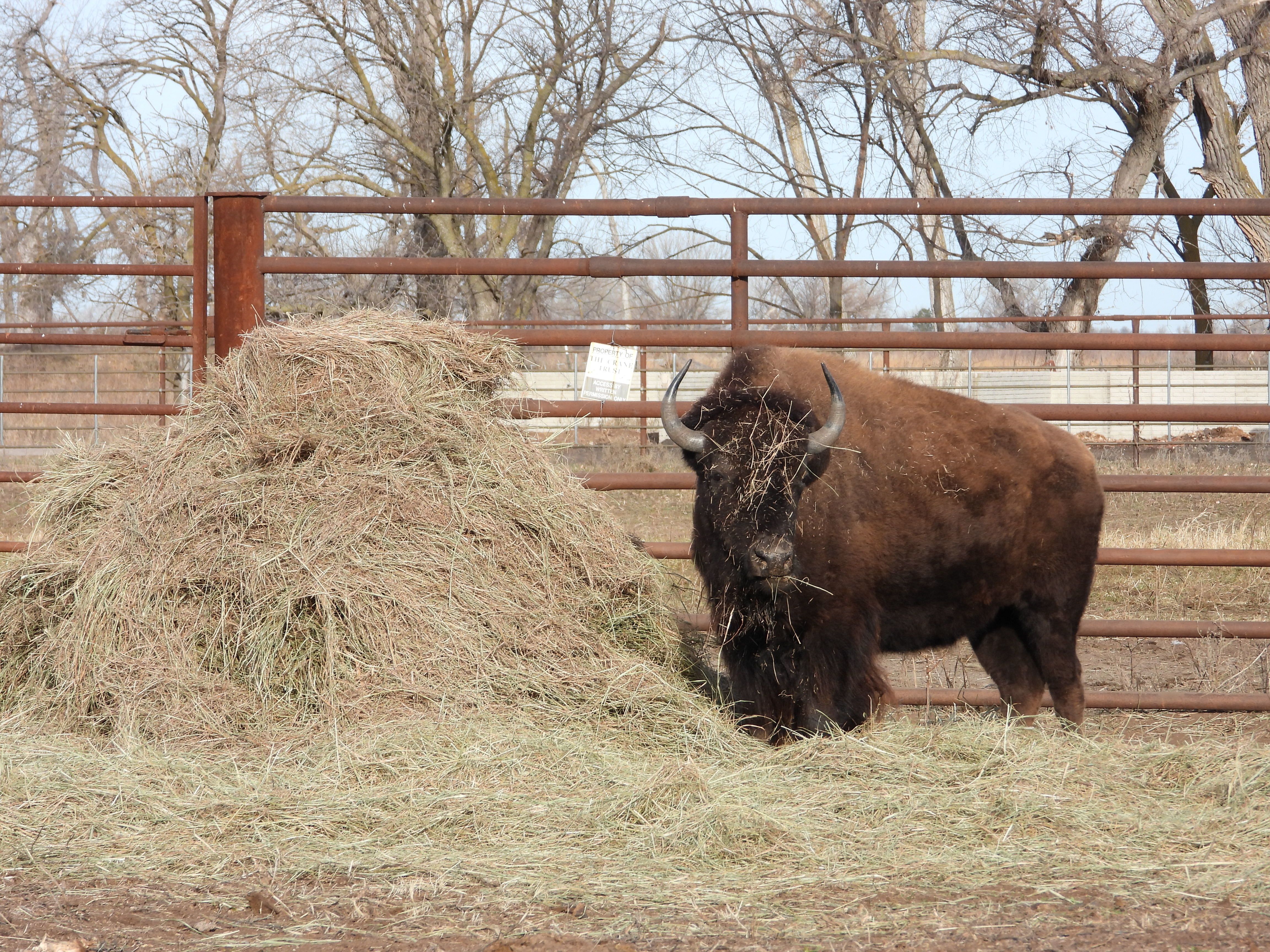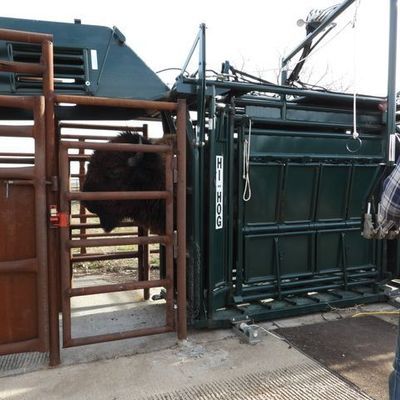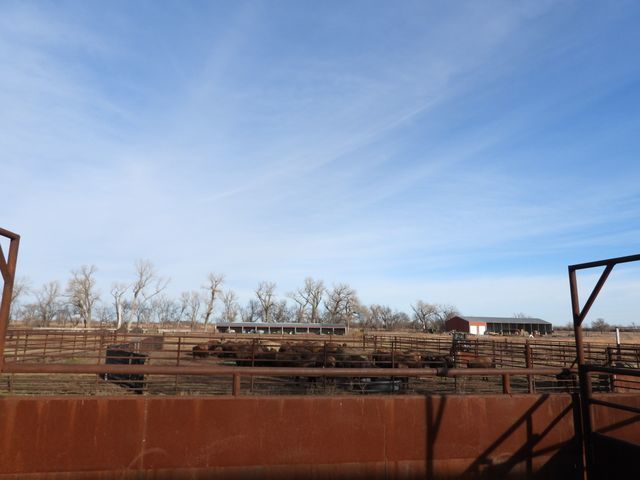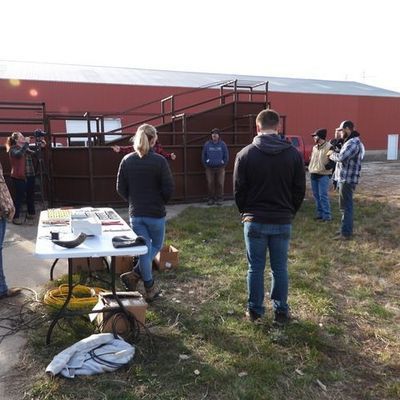
Welcome back!
I’ve talked about the Crane Trust’s use of prescribed fire (Things are really heating up!) and disking (Disking the Platte River!) as management techniques, but did you know the Crane Trust also utilizes grazers to promote healthy grasslands and create diverse habitat along the Platte River? Historically, grasslands evolved with bison as grazers promoting a variety of habitat types. However, when bison were extirpated from the landscape, this necessary disturbance was lost. While conservation managers have reintroduced disturbance with cattle, it’s unclear if cattle grazing behavior produces the same ecological effects in grasslands. To help understand the ecological role of bison, the Crane Trust released 41 Plains Bison (Bison bison bison) into Central Nebraska prairie in February of 2015 after a 150-year absence. The Crane Trust is studying the use of bison as a management technique assessing their impact on a variety of taxa, such as vegetation, birds, and small mammals. We also have ongoing research on their health, genetic diversity, behavior, social structure, and wallowing ecology to help further the conservation of the species. This is the first time such research is being conducted on Platte River habitat, which consists of a complex mosaic of wet meadows, mixed and tall-grass prairie, and riparian habitat.
Watch “Genetically Pure Bison Return to Nebraska Prairie”
The Crane Trust completes an annual ‘bison working’ event in the beginning of winter. Working allows us to check on the health of our herd while giving us the ability to sort our bison for conservation sale to spread our unique genetics to other herds. To start this process, bison are moved cautiously into a reinforced corral system, (Pictured Bottom) which is a series of pins and gates that is arranged for easier bison movement. Staff works to streamline the working process by moving bison towards the chute while sorting out individuals that don’t meet the working objectives. Once in the chute, the bison is weighed, assigned a body condition score, given unique identification tags if needed, and any necessary data is collected. This data could include taking tail hair samples for genetics or taking fecal samples to evaluate gastrointestinal parasite loads.


Safety for both workers and bison is the Crane Trust’s top priority. All Crane Trust employees must attend a meeting prior to bison working (Pictured Below) to discuss low-stress handling techniques and ‘watch out’ situations that could be potentially harmful. A meeting is also held after bison working so that Crane Trust staff can talk about what went well and where improvements can be made. One recent improvement was the addition of a hydraulic squeeze chute, partially funded by the Pietrok family (Pictured Above). This piece of equipment decreases working time while increasing safety. While bison working can be stressful, it is a necessary process in both studying and managing bison effectively.

To learn more about the research published by the Crane Trust about our bison herd, visit this link: https://linktr.ee/cranetrustbison
P.S. Did you know your donations can go directly to helping provide new fencing and facility improvements for our bison herd? If you are interested in helping the Crane Trust conserve bison and promote their ecological role in maintaining vital habitats for migratory bird species, click this link: https://cranetrust.org/how-to-help/
Until next time!
Cheers,
Amanda Medaries

